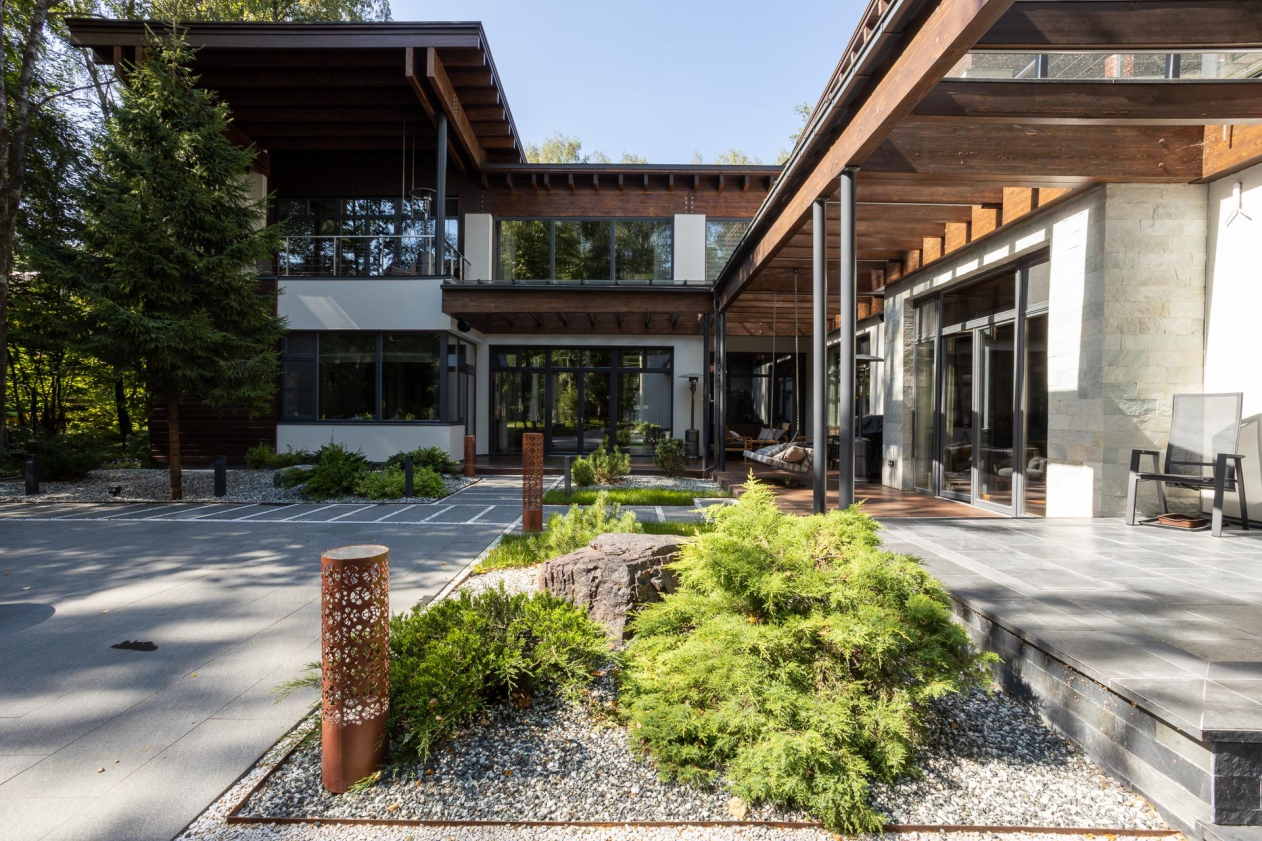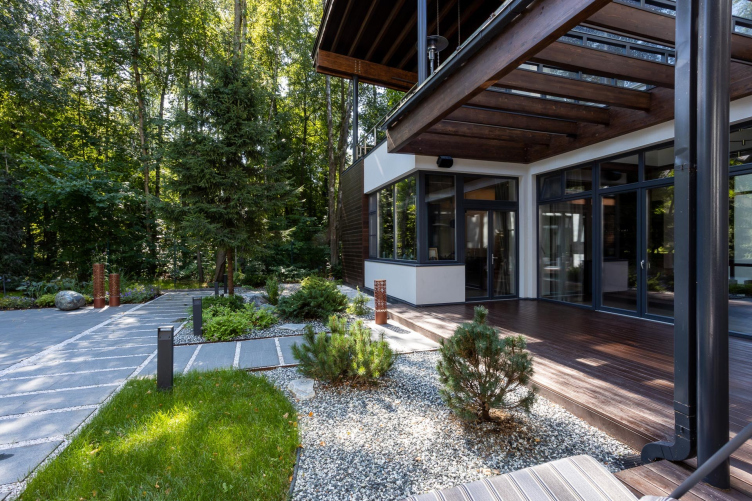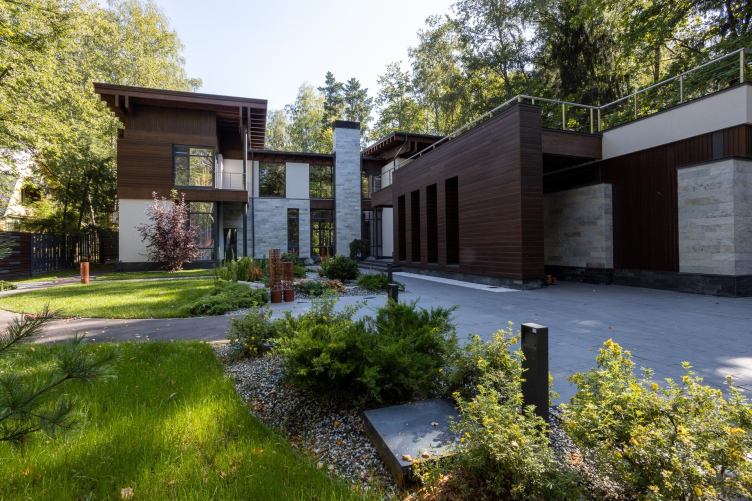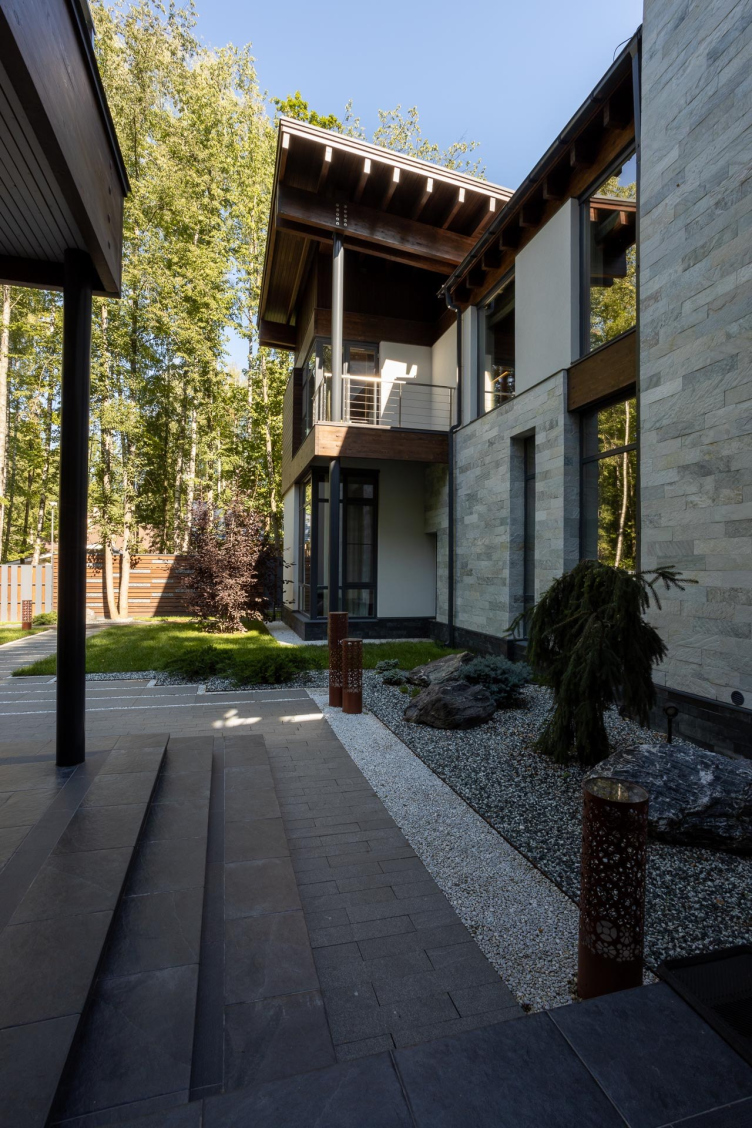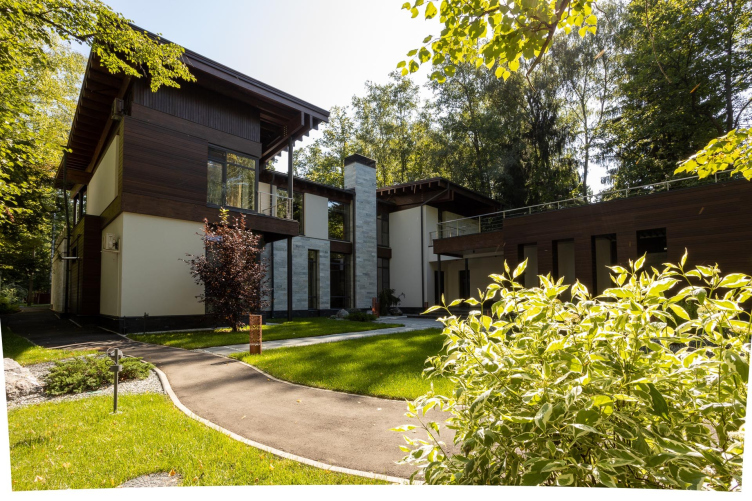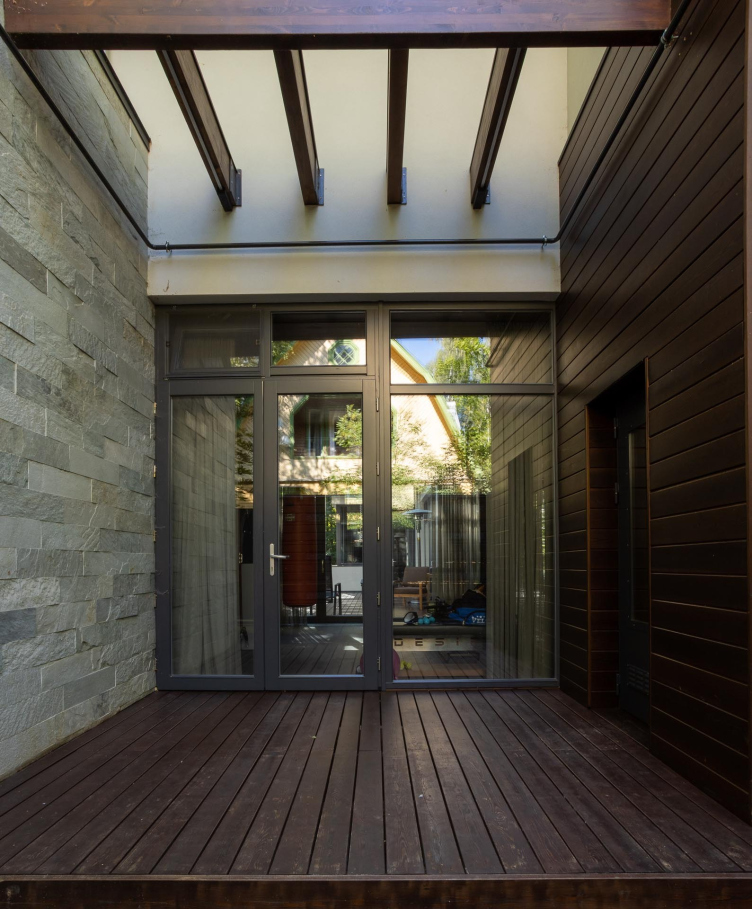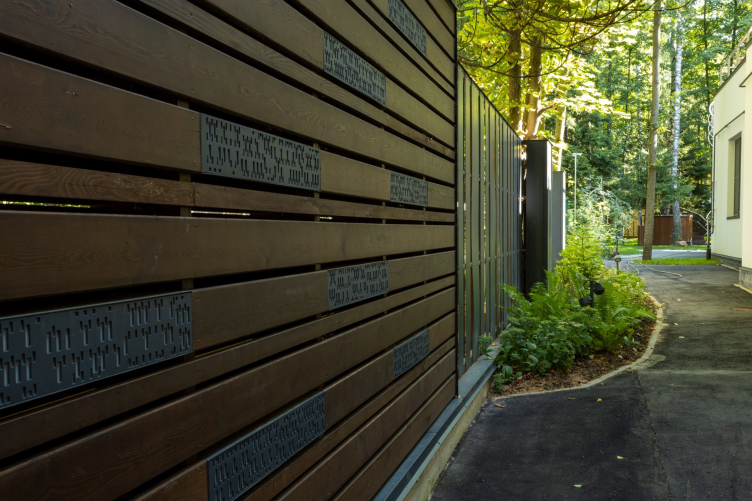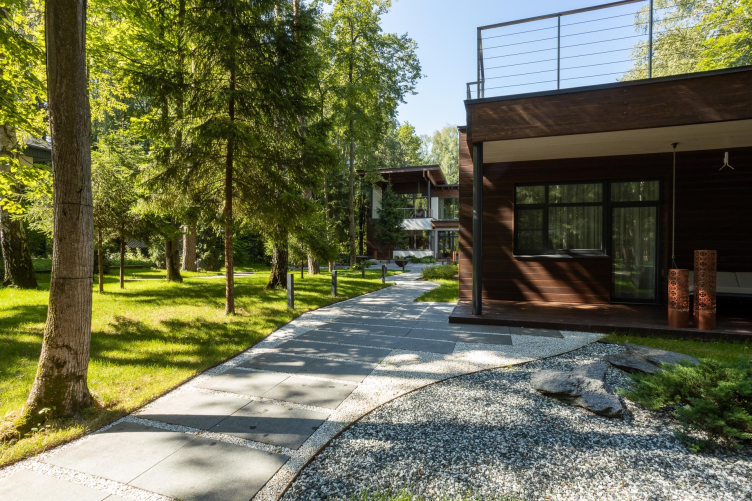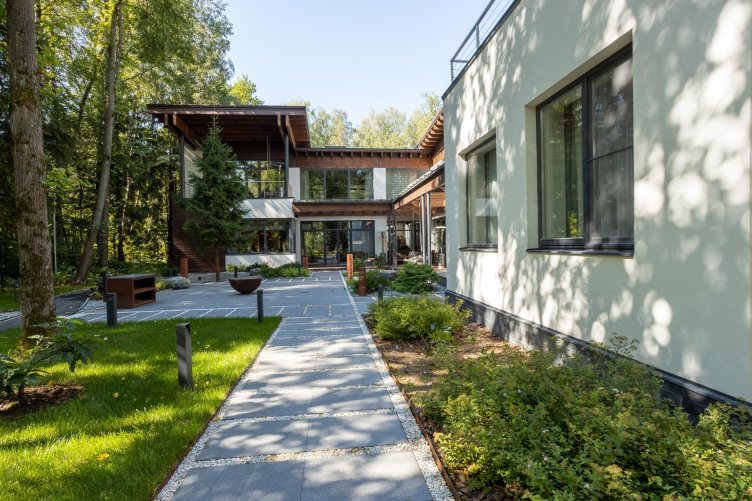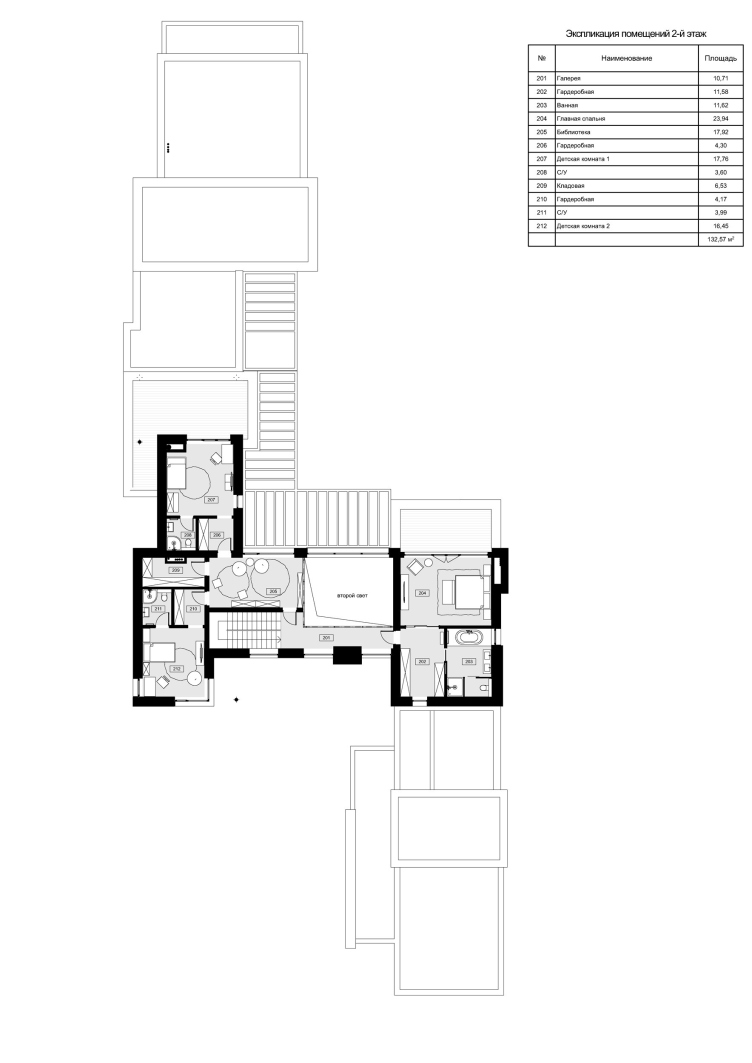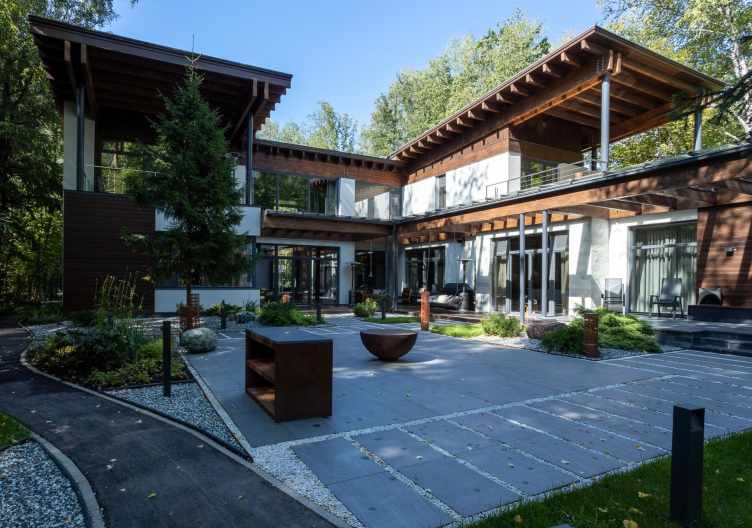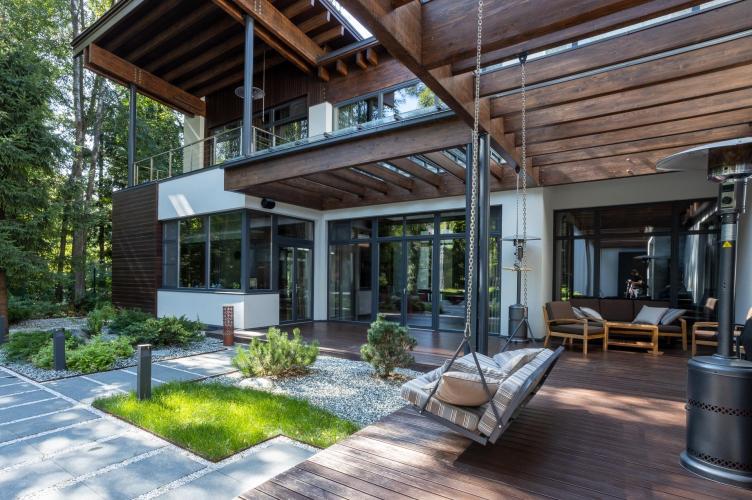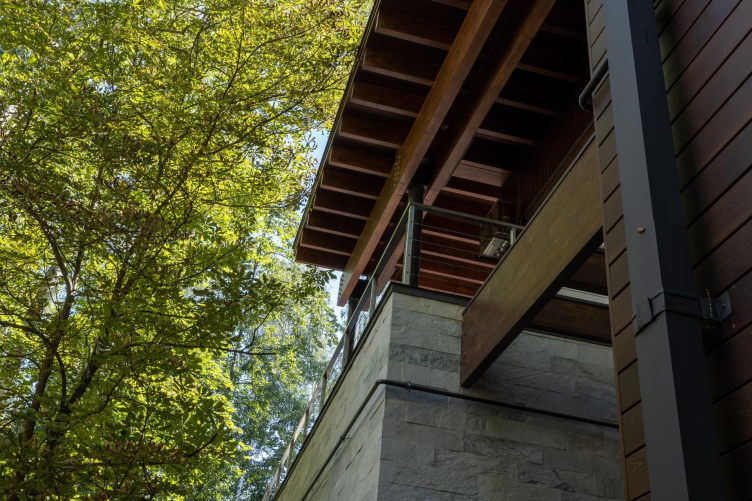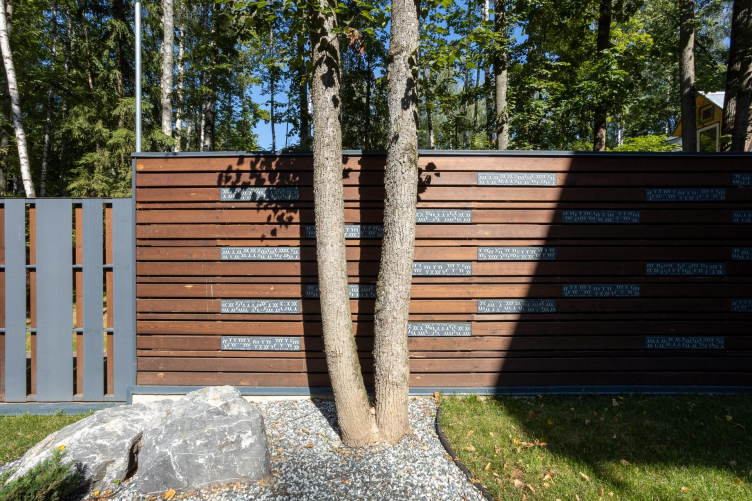Although Roman Leonidov’s new project is called “Akademicheskaya Dacha”, it has nothing in common with the proverbial Soviet dacha houses with their inevitable glassed-in verandas and time-beaten libraries, except perhaps its location. The location of this private residence is not disclosed, but it is known to be in the Moscow region, surrounded by mature trees, with neighboring “professorial” dachas of the kind that we have just mentioned. The clients, however, are a young ambitious couple.
Two important conditions influenced the concept. Firstly, the house is designed for the permanent residence of three generations of one family: the husband and wife, as well as their children and parents – all of whom should feel both their independence and their sense of unity. The second condition is the long narrow plot, on which the architects had to accommodate a large number of functional areas.
Akademicheskaya Dacha
Copyright: Photograph © Roman Leonidov
The house was designed neither tall nor compact, but on the contrary, it is widely spread out in a zigzag shape, approximately covering half of the plot. This allowed for achieving a sense of privacy, as the majority of volumes remained hidden behind the trees, and also helped to achieve spatial diversity: thanks to this unusual configuration, two large courtyards were formed – the “front” one and the “family” one, with plenty of nooks and crannies for landscape design ventures. By the way, the landscape design part was also done by Roman Leonidov Studio on this project.
At eye level, there is no point from which one could take in the entire structure at a glance. Therefore, to understand the house, we will mentally circle it around.
You can enter the plot through a wicket gate or the driveway gate, which leads to a cold garage connected to utility rooms – a pantry, a cloakroom, and a laundry room. To the left of this block, there is a gallery: it shields the visitors from the weather and leads them to the front porch. Jumping ahead, it’s worth noting that there are a total of 10 entrances and exits in the house. Another function of the gallery is to balance off the mezzanine block, clad in the same larch wood, and moreover, to offer an alternative spatial experience: one can stroll along the paved path, enjoying the space, or gaze at the garden through the “frames” of the openings.
Akademicheskaya Dacha
Copyright: Photograph © Roman Leonidov
Akademicheskaya Dacha
Copyright: Photograph © Roman Leonidov
The main residential block adjoins the utility wing – on the plan, it looks like a “bridge” of the zigzag. Standing at the wicket gate, one can see the guest bedroom and the kitchen/living room on the ground floor, as well as the children’s and parents’ bedrooms on the second floor. On the same side, the front courtyard with landscape compositions and a paved area is situated. From here begins a winding asphalt path that loops around the entire plot. The choice of covering is explained by the fact that the homeowner enjoys skateboarding.
Akademicheskaya Dacha
Copyright: Photograph © Roman Leonidov
The path skirts the house on the left, where it is pushed to the edge of the plot as close as possible. Another technical block is oriented towards this side, inside of which are the boiler room, pantry, gym, and spa area with a sauna and hammam. The architects made this part of the estate attractive as well: a micro-terrace with a glass entrance to the gym opens onto the “backyard”, through which the second private courtyard is visible, and an accent insert made of larch planks with built-in lights is made in the fence opposite it. Instead of the lights, living plants were supposed to be here, but during implementation, it became clear that they would require too much maintenance.
Akademicheskaya Dacha
Copyright: Photograph © Roman Leonidov
Akademicheskaya Dacha
Copyright: Photograph © Roman Leonidov
The “sports and health zone” connects the main part of the house with the grandparents’ domain - a spacious wing with its own kitchen, living room, and two bedrooms, from which one can step out onto a quiet veranda facing the forest park. The architects took into account the preferences of the older generation and refrained from designing floor-to-ceiling windows in this part of the house, adding clotheslines with clothespins to the external walls – a seemingly unimportant, yet at the same time very human detail.
Akademicheskaya Dacha
Copyright: Photograph © Roman Leonidov
Akademicheskaya Dacha
Copyright: Photograph © Roman Leonidov
The path leads into the depths of the plot, where a gazebo and a separate house for assistants are hidden, and then returns to the two-story part of the complex – the heart of the entire composition and the focal point of family life.
On the first level of the “master’s mansion” is the living room, kitchen with dining area, and a guest bedroom, while on the second level are two symmetrically arranged children’s rooms, separated from the parents’ bedroom by a spacious and bright staircase hall with a library. From the elder son’s room, there is access to a huge terrace that stretches the entire length of the wing, facing towards the forest. It can be accessed from ground level via a spiral staircase located at the grandparents’ house – this graphic detail against the backdrop of white plaster reminds one of the Gropius House, where the architect provided a similar separate entrance for his daughter’s room.
Akademicheskaya Dacha
Copyright: Photograph © Roman Leonidov
Akademicheskaya Dacha
Copyright: Photograph © Roman Leonidov
The reverse-sloped roof above the children’s block allowed for a loft level in the rooms. The decoration of both “mezzanines” – the children’s and the parents’ – consists of paired wooden roof beams. One of the most challenging tasks was to choose paint colors for them so that the coniferous wood did not differ from the larch planks on the facades.
Akademicheskaya Dacha
Copyright: Photograph © Roman Leonidov
The heart of the entire composition and the place where family members meet most often is the inner courtyard. A wide veranda, protected from the sun and rain by a pergola with a glass roof, shelters a swing, a dining area, a playground, a barbecue area, and landscape compositions. Lace-like lamps specially made for this project echo the round table made of weathered steel.
Akademicheskaya Dacha
Copyright: Photograph © Roman Leonidov
Akademicheskaya Dacha
Copyright: Photograph © Roman Leonidov
Akademicheskaya Dacha
Copyright: Photograph © Roman Leonidov
The house has three main tones – light plaster, gray slate or quartzite, and bronze-toned wood. These materials, traditional for this architectural firm, help understand the structure of the house, as each functional block on the façade manifests itself with its color or texture, and pronounced horizontals emphasize the floors and unite all elements into a single composition. The dynamic lines correspond to the character of the clients – energetic people with business acumen.
Akademicheskaya Dacha
Copyright: Photograph © Roman Leonidov
Metal sheets were used for the fence, which, with the neighbors’ consent, were “sewn” with the remaining larch planks. These two-layer permeable segments alternate with solid horizontal inserts.
Akademicheskaya Dacha
Copyright: Photograph © Roman Leonidov
Below, the architect himself provides detailed insights into the house (the video is in Russian).

